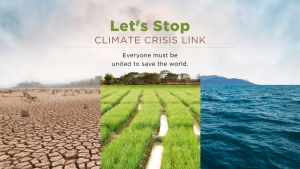
New research underscores forests’ vital role in the global battle against climate change. Between 2001 and 2019, forests absorbed approximately twice as much carbon dioxide as they emitted, sequestering a net 7.6 billion metric tons of CO₂ annually. This makes forests a critical “carbon sink,” offsetting a significant portion of global greenhouse gas emissions and slowing the pace of global warming.
Forests aren’t just part of the climate change conversation—they’re at the heart of it.
How Forests Act as Carbon Sinks to Combat Climate Change
Unlike industrial or transport sectors, where carbon emissions are largely one-way, forests act as a dynamic “two-way highway.” They absorb CO₂ from the atmosphere through photosynthesis while standing or regrowing but release it when cleared, degraded, or burned. This delicate balance highlights the urgency of protecting existing forests and promoting sustainable management practices to reduce the impacts of climate change.
When forests are destroyed, their carbon sequestration function collapses, and their stored carbon is released, accelerating climate change. In contrast, healthy, mature forests function as powerful allies in our global carbon management efforts.
Tropical Rainforests: Critical Yet Fragile Carbon Sinks
Tropical rainforests in the Amazon, Congo Basin, and Southeast Asia serve as the planet’s most essential carbon sinks, playing a central role in moderating climate change. The Congo rainforest, in particular, remains the world’s most effective net carbon sink—absorbing 600 million metric tonnes more CO₂ annually than it emits. That’s equivalent to one-third of the total emissions from all U.S. transportation.
However, the stability of these ecosystems is under constant threat. Unsustainable agricultural practices, deforestation, land conversion, and forest fires jeopardize their long-term capacity to act as carbon sinks.
Without immediate action, these regions may shift from carbon sinks to carbon sources, intensifying the effects of climate change and threatening biodiversity.
The Importance of Protected and Indigenous Forest Areas
Globally, 27% of the forest carbon sink is found within protected zones such as national parks, wildlife reserves, and indigenous territories. These areas are critical in maintaining the balance of CO₂ absorption and storage.
A standout example is the Menkragnotí indigenous reserve in Brazil, which absorbs 10 million metric tonnes of CO₂ more than it emits annually. This highlights how conservation and indigenous stewardship can make a significant contribution in our fight against climate change.
Protecting and expanding these areas must be a key strategy for governments and global climate alliances if we aim to limit global temperature rise.
Managed Forests: Sustainable Practices for Long-Term Impact
Sustainably managed forests can also play a role in offsetting carbon emissions. When harvest cycles are carefully monitored, and regrowth is prioritized, these forests continue to act as net carbon sinks.
However, the logging of primary forests—especially those untouched for centuries—can be devastating. These forests hold large carbon stores, and their destruction leads to major emissions that are difficult to recapture. Protecting these untouched areas is crucial in mitigating climate change.
Why Mature Forests Matter in Climate Strategies
Forests that have grown in the last 19 years contribute less than 5% to the global carbon sink, revealing a crucial truth: mature forests are irreplaceable in our climate strategy. Newly planted forests take decades to sequester significant amounts of CO₂, while older forests already hold vast carbon reserves.
Thus, the priority must be to preserve existing forests, particularly primary ones, while promoting afforestation and reforestation as complementary strategies—not substitutes.
MayAir’s Role in Fighting Climate Change
At MayAir, we recognize the urgency of addressing climate change and understand the importance of cleaner, healthier air for all. While forests are nature’s filtration system, we provide the next best thing for your indoor environments.
Our air filtration solutions help reduce carbon footprints across industries, commercial buildings, and homes. With advanced systems designed for sustainability, we empower businesses and individuals to reduce emissions, meet environmental targets, and actively contribute to climate goals.
Whether you’re improving your workplace or safeguarding your home, our technology ensures healthier air and a smaller environmental impact—an ideal combination in today’s fight against climate change.
Your Next Step Toward Sustainability
We believe that change begins with informed choices and practical action. Forests may be the planet’s original defense system, but everyone can play a role in reversing climate change—starting from the air we breathe.
Discover how MayAir can support your journey toward sustainability. Explore our full range of eco-conscious air purification solutions at mayair.com.my and take the first step in creating a greener, cleaner world for future generations.


